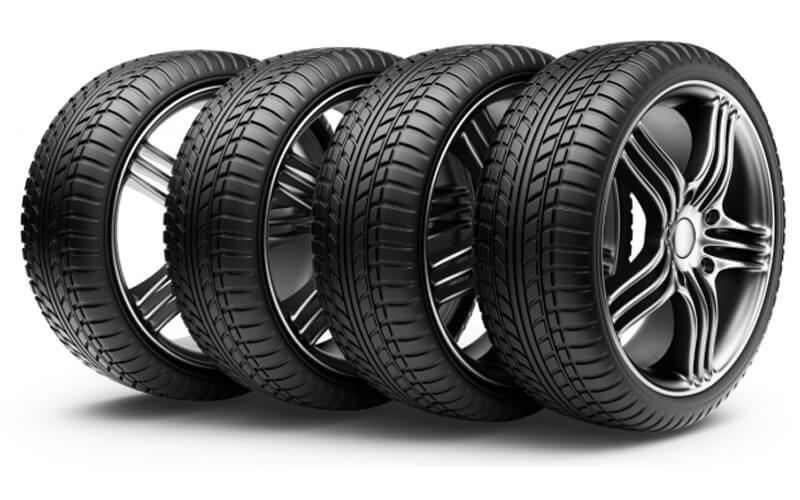Tubeless vs Tube-type Tyres: A Comprehensive Guide

Tyres have evolved with time. With the advancement of technology, the entire tyre industry has undergone huge changes and has come up with innovative products. Tubeless tyres are one such example. However, are tubeless tyres worth the hassle? How do they fare against traditional tube-type tyres? The following blog examines both tyres to find out the best possible option for our readers.
What Is A Tube-type Tyre?
A typical tyre, also called a clincher or a tube-type tyre, is the most common tyre often seen being used in cars, bikes, or other vehicles. It comes with a tube within the structure that traps air to maintain tyre pressure. This inner tube is separate from the tyre itself and is the reason why they are called tube-type tyres. If you have bought tyres in Stevenage, chances are they must have been tube-type tyres.
The tyre construction adopts different layers, with rubber forming the outermost one. This layer is responsible for offering not only durability to the entire structure but also for traction. The next layer is called carcass or the intermediate layer is made up of woven cloth. Then lastly, we have the inner layer, or the bead, which is made up of steel. The inner tube hides behind this layer.
A typical tube-type tyre is very easy and much cheaper to install on a vehicle. They are easily found in the market and can work with almost any type of wheel. However, when it comes to performance and puncture resistance, they can’t match tubeless tyres.
What Are Tubeless Tyres?
Tubeless tyres, as the name suggests, are tyres that lack an inner tube. Instead of a tube, a sealant is put into the tyre before mounting it on the wheel. It is due to this sealant that an airtight seal forms between the tyre and the wheel, thus negating the need for tubes.
Just like tube-type tyres, it is also comprised of three layers: the outermost, intermediate, and inner layers, made up of rubber, woven clothes, and steel, respectively. However, unlike traditional tyres, there are a number of benefits associated with tubeless ones. The most prominent one is the ability to work even after suffering a puncture wound.
What Are The Major Differences Between These Two Types Of Tyres?
Given below are the few major differences between these two types of tyres:
Construction
Obviously, there is a difference between these two tyres when it comes to construction. One has a tube inside, while the other one comes without it. In tube-type tyres, the tube itself plays an important role in maintaining the shape of the tyre and trapping air to maintain air pressure. On the other hand, tubeless tyres do not fashion a separate tube but use the inner line to seal off the space between the tyre and the wheel to maintain the shape and air pressure of the tyre.
Placement of valve
Surely, with the absence of the tube itself, the placement of the valve will also differ in these tyres. In tube-type tyres, the valve is connected to the inner tube and is an integral part of the tyre itself. However, in tubeless tyres, the valve is connected to the wheel and not the tyre.
Rim Compatibility
Tube-type tyres are pretty common and can easily be mounted on any wheel, regardless of rim design. However, tubeless tyres require rims to be created in a specific manner before they can be installed on your car.
Safety Features
For obvious reasons, tubeless tyres are considered far safer than tube-type tyres as they are more well-equipped to handle sudden pressure loss.
Maintenance
You can maintain tubeless tyres effortlessly. They require less effort when compared to tube-type tyres.
Puncture
Tubeless types automatically seal the puncture, minimizing air loss, whereas tube-type tyres will undergo rapid air loss.
Which One Is Better?
If you want to learn which tyre might be a better choice for you, read the following:
- Tubeless tyres won’t lose air immediately after a puncture.
- Tubeless tyres can also work at a lower air pressure to increase traction and handling without damaging the tyres themselves.
- Tube-type tyres have a much higher rolling resistance, making them the wrong choice from both economical and environmental points of view.
- Tube-type tyres are much easier to mount and get repaired.
- Tube-type tyres are also much cheaper and easily available in the market.
Advantage Of Tubeless Tyres
If you require new tyres and are thinking of purchasing one anytime soon, we suggest reading the following before making up your mind. Tubeless tyres offer far greater advantages as compared to tube-type tyres. If it is Continental tyres in Stevenage, why not go with tubeless ones?
Reduced Risk
This is the most significant advantage tubeless tyres hold over their general counterparts. Since they lack a tube, the risk of tyre blowouts is almost nonexistent. Even in the case of an extreme puncture, these tyres will deflate slowly. The gradual process will thus allow the driver to notice the problem in time and take appropriate action.
Better Fuel Efficiency
Next, tubeless tyres also offer a much better fuel efficiency than normal tyres. Since they are lighter, they require less force to work, which results in the engine burning less fuel and thus saving on expenses.
Seal Punctures Automatically
Yes, most tubeless tyres seal punctures automatically. The inner lining is made in such a way that it will prevent the air from escaping even when the tyre is punctured. In such an event, the special sealant that we discussed above will quickly seal off the puncture wound.
Longer Lifespan
Since they are puncture-resistant to a certain degree, it comes as no surprise tubeless tyres have a much longer lifespan. These tyres can even last much longer on roads with harsher conditions.

